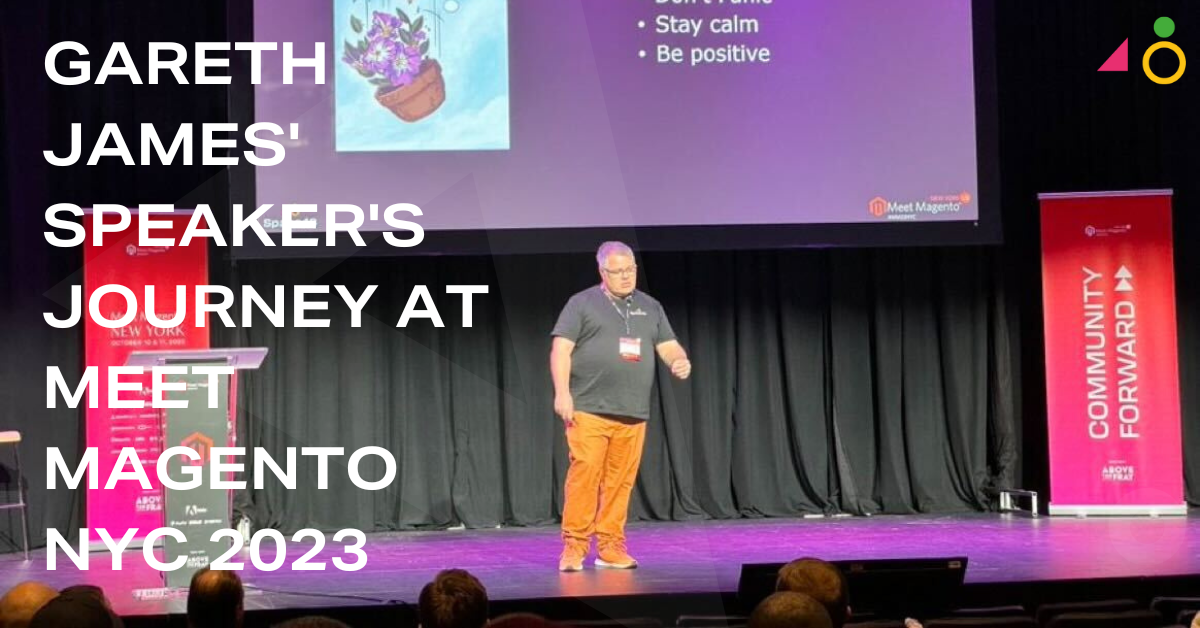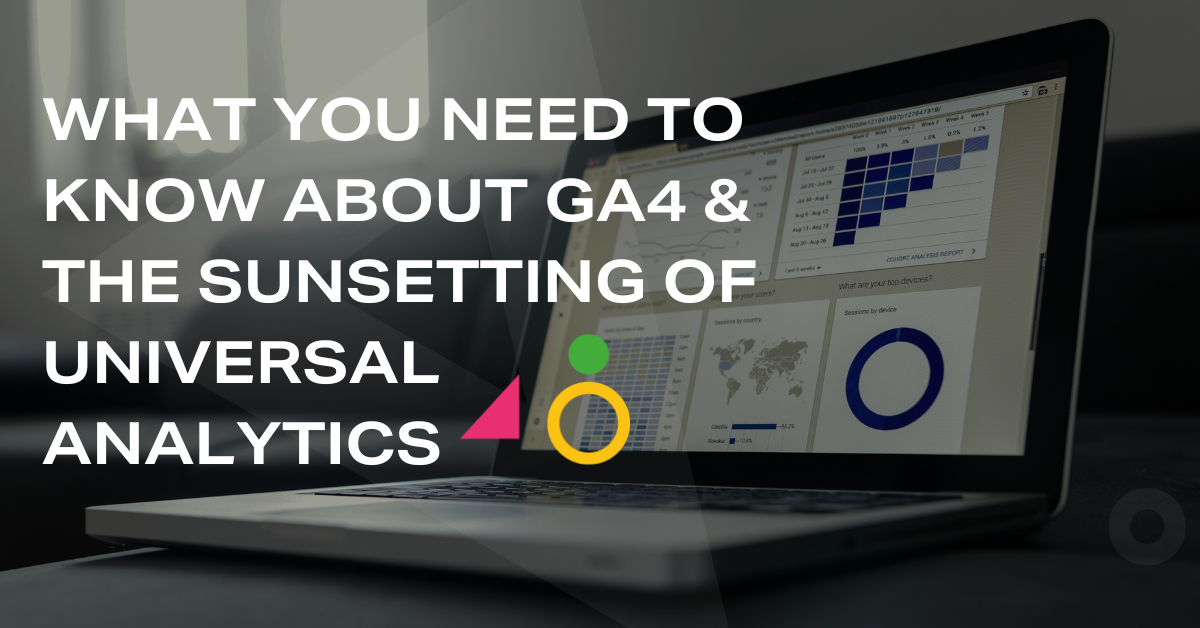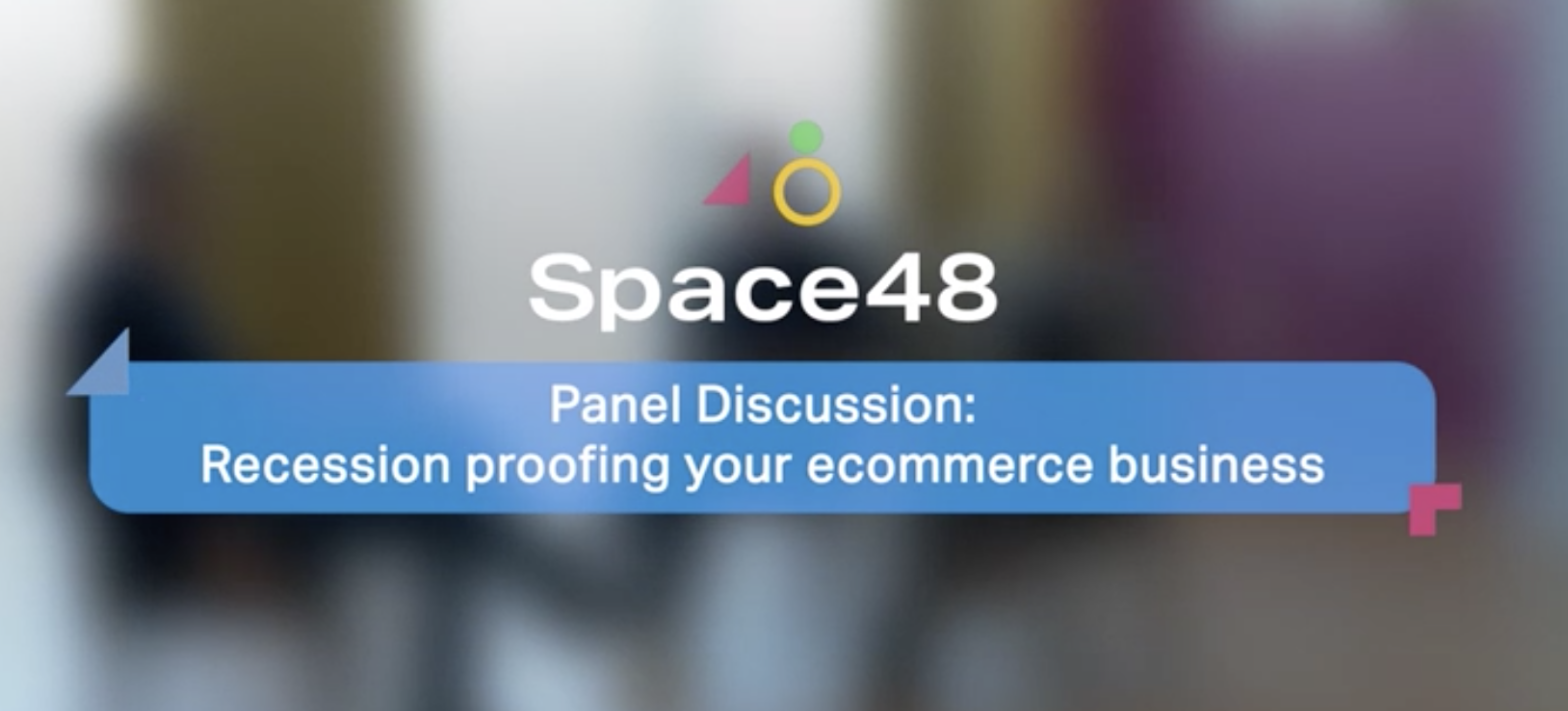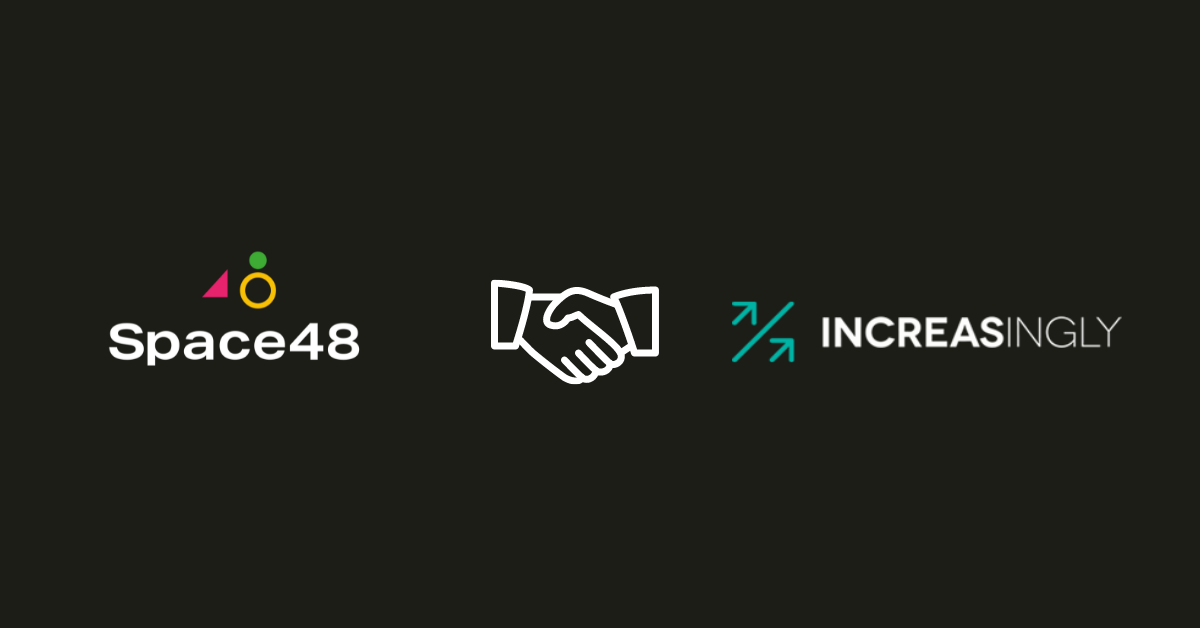
10 Effective Email Marketing Tactics to Drive Ecommerce Conversions
Email marketing and ecommerce go hand-in-hand and email has long been a retailer’s most effective channel for nurturing customer relationships and encouraging repeat purchases. Despite the introduction of new data rules and marketing consent under The GDPR, email will continue to be an important channel in ecommerce.
In this blog, Space 48’s Marketing & Events Manager – Natasha Wright outlines 10 top email marketing tactics to drive more conversions for your ecommerce business.
1. Create an effective welcome email series
Too many businesses put too much emphasis on customer acquisition and often neglect the post-purchase phase of the customer journey. The job is far from done once a customer converts and purchases a product. Engaging and retaining customers starts with the first email and creating an effective welcome series is a great way to start your customer relationship on the right foot.
Think beyond order confirmations and thank-you emails. You need to be more sophisticated, more human and put your customer experience and service first. Plan a welcome series that informs, helps and delights your new customers and subscribers. Consider product guides, tutorials and tips for getting the most out of the products they’ve purchased. Here’s an an example from Sony:
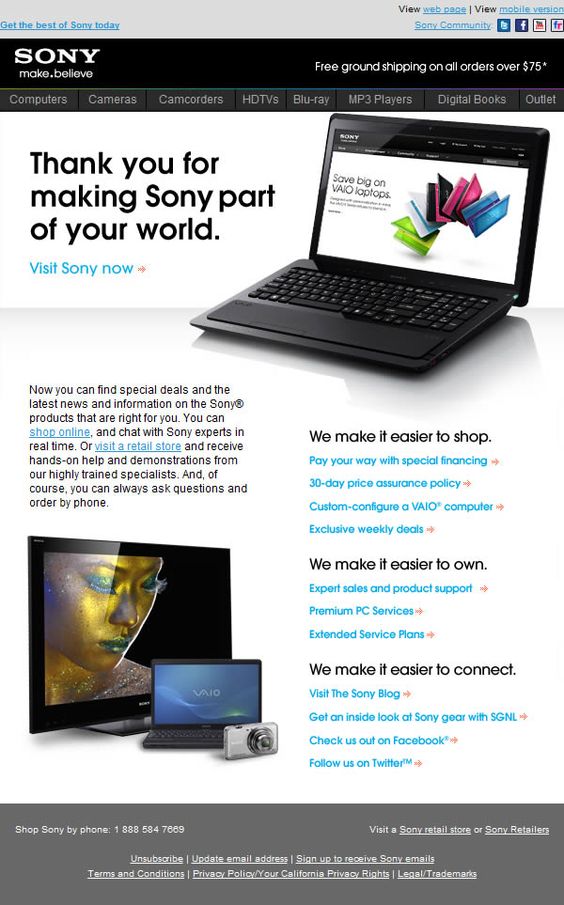
Or why not use welcome emails as a way to recommend related products or even discounts on the subscriber’s first purchase (or a new customer’s next purchase)? See the welcome email example from The Company Store below:
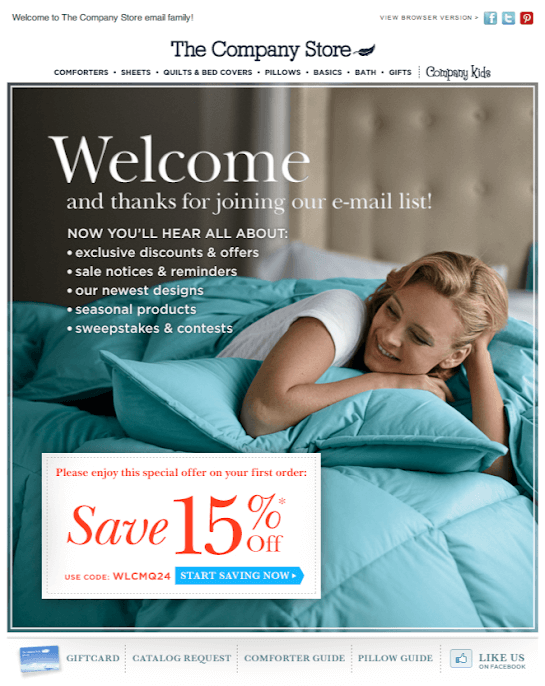
Remember, even if customers don’t consent to ongoing marketing emails during checkout, transactional emails are still valid under “legitimate interest” (as stipulated in GDPR rules around marketing consent and data processing).
2. Focus on customer retention
As we mentioned, it’s vital to focus on customer retention and not just acquisition and one-off conversions. A high customer lifetime value is a good indicator of a healthy retail business. Plus, the stats all add up!
Returning customers make up 40% of online revenues even though they representing just 8% of website visitors (Source: Adobe Digital Index Report)
This should be enough of an incentive for you to commit more time and resources into nurturing and retaining your customers for longer. And email marketing is the most effective (and cost-effective)channel for nurturing customer relationships and it still rates highest in comparison to other channels, in terms of ROI, according to Econsultancy’s 2018 Email Marketing Industry Census.
Here are just a few of the many ways to boost customer retention and increase your customer lifetime value with email marketing:
- Segmenting your subscriber list to send more targeted emails
- Utilising in email personalisation and product recommendations
- Remarketing and retargeting subscribers with offers, promotions and updates
- Looking after customers with post-purchase emails
- Rewarding subscribers with loyalty emails and incentives
- Keep subscribers engaged with compelling brand storytelling and engaging email content
- Send dynamic emails with realtime email marketing tools
- Request feedback from customers to tailor journeys and get a customer viewpoint of your service and content
3. Utilise marketing automation
Marketing automation is essential for creating more targeted and effective email marketing campaigns. Setting up automated triggers to send out emails to subscribers according to their behaviours, profile and preferences helps retailers to interact with customers at key touchpoints, with relevant and timely content.
I’ve outlined some of the key automated email campaigns you could be running:
- Post-purchase emails/welcome emails
- Product recommendations and personalised emails
- Cart abandonment emails
- Rewards/loyalty emails (according to engagement, profiles and purchase history)
- Reengagement/customer win-back emails
Check out our blog on utilising marketing automation effectively to boost customer retention: How to Boost Customer Retention with Marketing Automation.
4. Step up your cart abandonment campaigns
Cart abandonment campaigns are underutilised in retail and they are really a no-brainer for marketers to put into action. Basket abandonment emails are effective at boosting conversions, as consumers are already warmed up and in buying mode.
The average cart abandonment rate in ecommerce is 75.6% (Source: SaleCycle (https://blog.salecycle.com/cart-abandonment-stats/))
There are many reasons that shoppers abandon their shopping carts, such as wanting to purchase products on a different device or at a later date, waiting to add further products to reach a free shipping threshold, or even circumstantial factors like losing signal or data and just not having time to finish a purchase. Whatever the reason, a gentle nudge and reminder about the products left in their baskets (or even a discount code or incentive) can reignite consumers’ interest and get them back to the checkout.
Browse and category abandonment emails can be used to show subscribers relevant products and offers related to the products and categories they were looking at on your website.
Here are a couple of examples of effective cart abandonment emails from top retail brands:
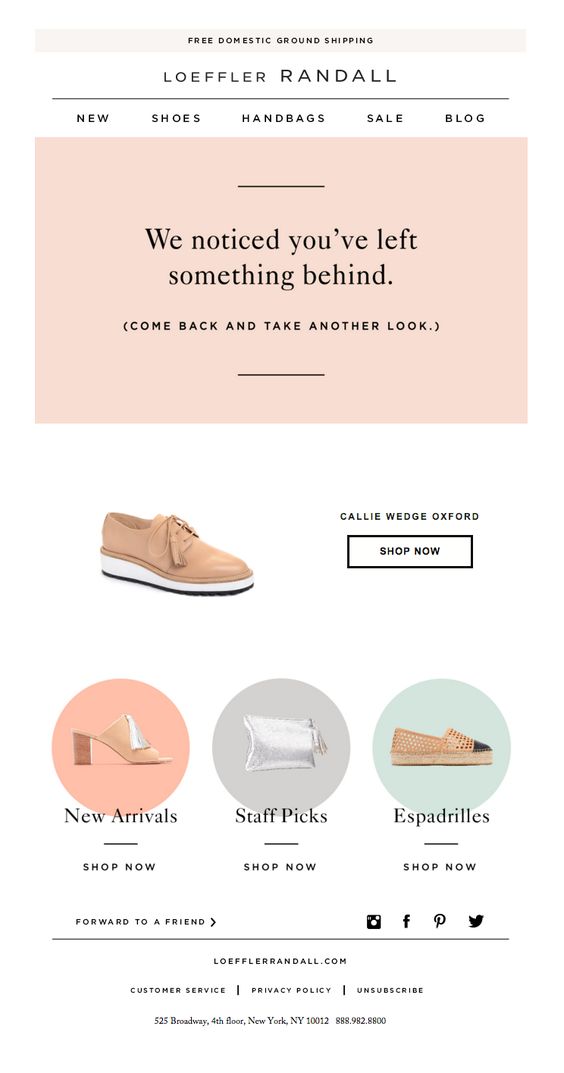
Plan an abandonment email series and don’t leave it too late to send them out. Consider sending the first email on the same day, followed by another 24 hours later, and so on. Why not download our dedicated cart abandonment guide: How to Create Killer Cart Abandonment Campaigns.
5. Incentivise subscribers with loyalty schemes and rewards
What better way to keep subscribers engaging with your emails or returning to your website than with incentives, loyalty rewards and offers. You don’t necessarily need to set up a loyalty scheme, as it depends on what suits your particular business. However, automation rules can be set up to send loyalty emails to customers who spend over a certain threshold or who are most active.
There are lots of different persuasion tactics you can use in your loyalty email camapigns, such as:
- Discount codes
- Money-off vouchers
- Free shipping offers
- Exclusive offers or opportunities
- Free gifts or affiliate offers/rewards
- Priority access to offers or events
Check out this great loyalty email campaign example from TOMS:
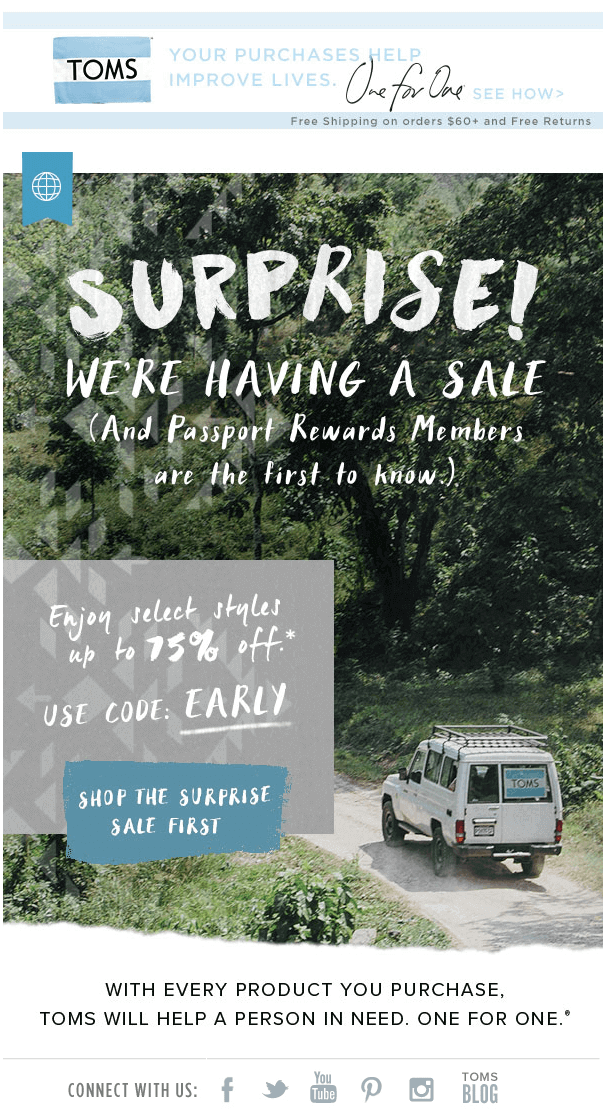
6. Implement a reengagement strategy
Whilst many subscribers will engage regularly with your emails and customer retention tactics, resulting in repeat purchases and conversions, there will be a significant proportion of your email database which stagnates, i.e. lapsed/inactive subscribers.
In fact, up to 75% of your subscriber list may be inactive! (Source: Enchant)
So, putting in place a reactivation framework within your email marketing strategy is important, so you can attempt to win back customers before they become too disengagement with your emails. The best way to do this is through automated triggers. You’ll need to define what constitutes an inactive subscriber for your business, as it depends on the type and frequency of your email marketing activity.
Once you’ve established this, you can start to plan your email reengagement campaigns. There are lots of different approaches to email marketing reactivation, and a range of persuasion tactics you can use, such as:
- Entice lapsed subscribers back to your website with unmissable offers
- Send “we miss you”-style emails and incentivise subscribers with offers, discounts or other value
- Remind your least active subscribers and customers about what they are missing
- Offer subscribers the chance to tailored their email preferences
- Create more compelling subject lines that stand out from the inbox
- Use ultimatum emails to prompt subscribers to reengage or unsubscribe
We love this reengagement email from Boden, which uses playful copywriting, clear CTA buttons for staying subscribed or opting out, plus a really compelling 60% off promotion to entice customers to click through to their website!
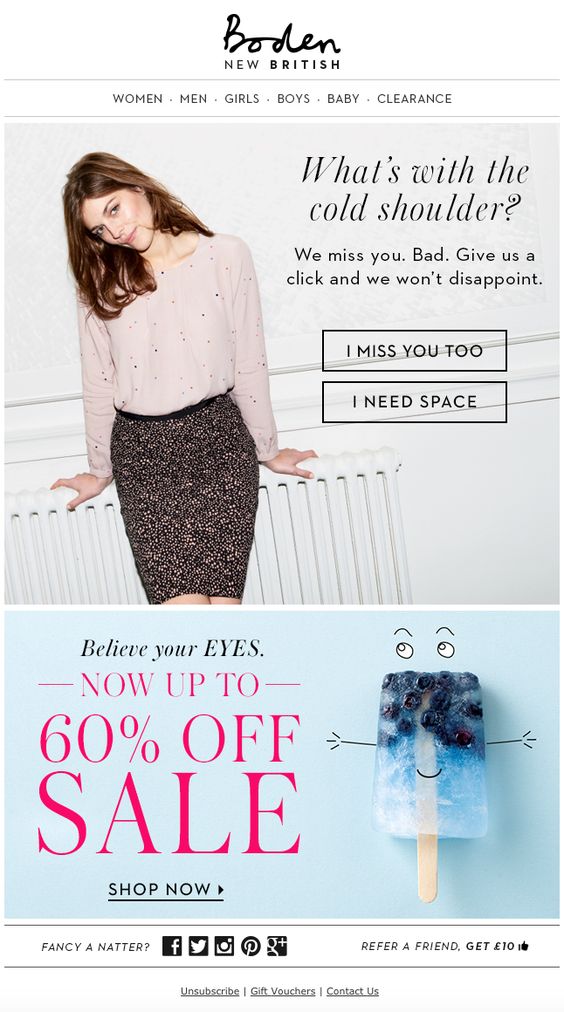
7. Segment your subscribers list for more tailored email journeys
Nowadays, with GDPR in full force, retailers must ensure their email marketing campaigns are relevant and targeted, to keep subscribers engaged and interested in receiving emails from your brand. List segmentation is key here, whilst it’s essential for sending the right emails to the right people, at the right times.
You can segment your email database by:
- Customer interests and preferences
- Location
- Purchase history
- Engagement level
- Recency
- Lifecycle stage
With a good automation platform, you can create lists based on endless rules that correlate with the type of users in your email database and the actions that they take on your website and with marketing campaigns. This granular segmentation gives retailers the ability to really enhance the relevance of your emails.
8. Enhance you personalisation by using the right tools
Personalisation is another key part of making your emails as relevant as possible for your customers. Behaviour-based triggers, automated workflows and third-party personalisation tools help retailers to target customers with relevant and related products, based on purchase and browsing history.
75% of consumers are more likely to buy from retailers that use personalisation. (Source: Accenture)
We highly recommend Nosto for onsite personalisation, email campaigns and retargeting ads, to deliver personalised content and product recommendations across channels, at key touchpoints within customer journeys.
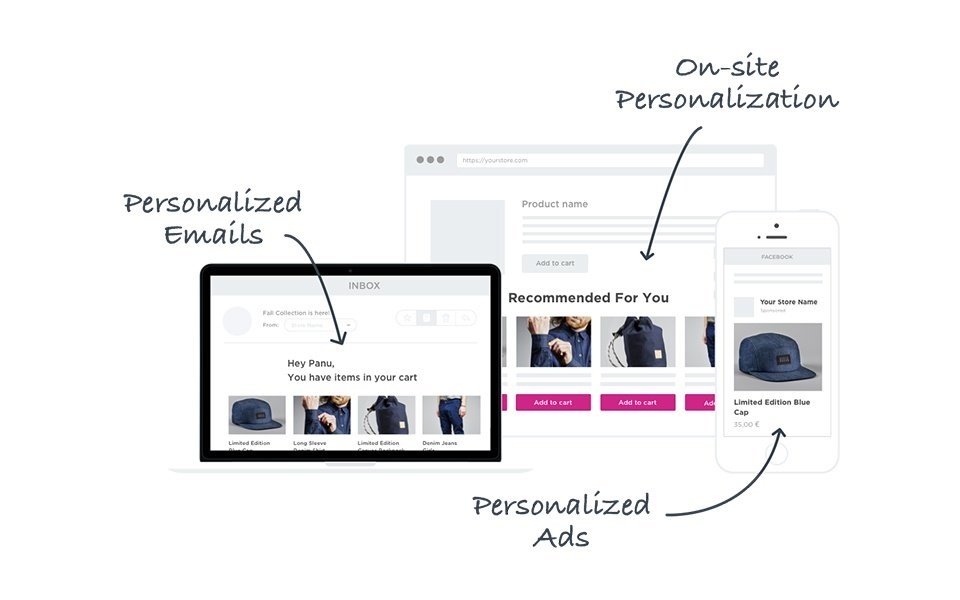
9. Integrate email marketing with social media channels
We’ve mentioned retargeting ads and these are effective for nudging customers after they’ve visited your website or received your emails. Using tracking pixels (such the Facebook Pixel) and marketing automation triggers to send paid social ads to customers can really boost your conversion rate.
This is just one way to integrate email marketing with social media. We recommend that your clearly point subscribers to your social channels via your email campaigns. Or directly invite your email subscribers to follow your brand on certain social channels, even using an incentive to do so!
10. Embrace a post-GDPR email marketing approach
You may have felt the impact of GDPR since May’s data compliance deadline. However, it’s important to embrace the change that GDPR has brought about and look to be more transparent around marketing consent and honest about the reasons for processing and utilising personal data, such as increasing relevance and tailoring customer journeys. This will increase trust and make the value exchange and benefits of subscribing to brand emails more clear to consumers.
Optimising your email sign-up forms is important. Consider the following tactics:
- Include email sign-up in your website checkout process, clearly outlining the benefits of opting in
- Give website visitors clear routes to email sign-up, using links and subscription forms on key pages and in your site footer
- Use popovers to encourage email sign-up, leveraging discounts and incentives
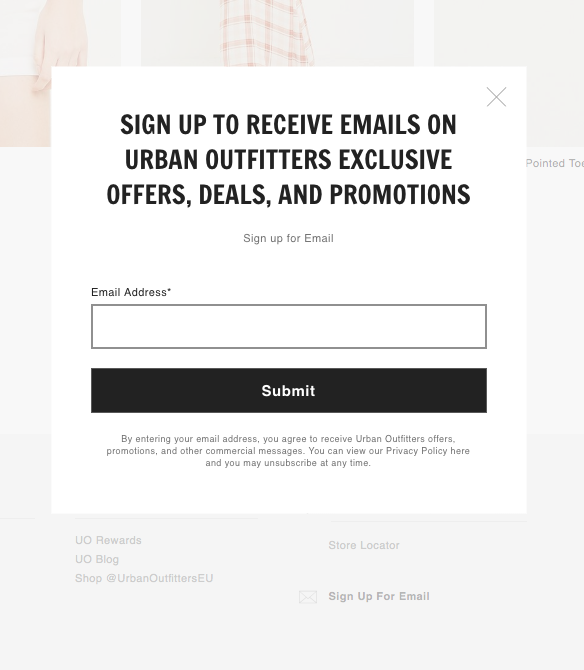
Also, wherever possible, give subscribers the option to update and tailor their email preferences, enabling you to send them more of the content that’s relevant to them.
Summary
We hope you found this blog useful and that you’re ready to implement some of these effective email marketing tactics for boosting conversions. Email marketing, especially when enhanced with automation and personalisation, can really increase your conversion rate and delight your customers throughout their relationship with your brand.
Space 48 is a leading UK ecommerce consultancy, based in Manchester. We specialise in ecommerce website development and omnichannel retail strategy. Do you have any questions about email marketing? Get in touch with our experienced ecommerce experts.

